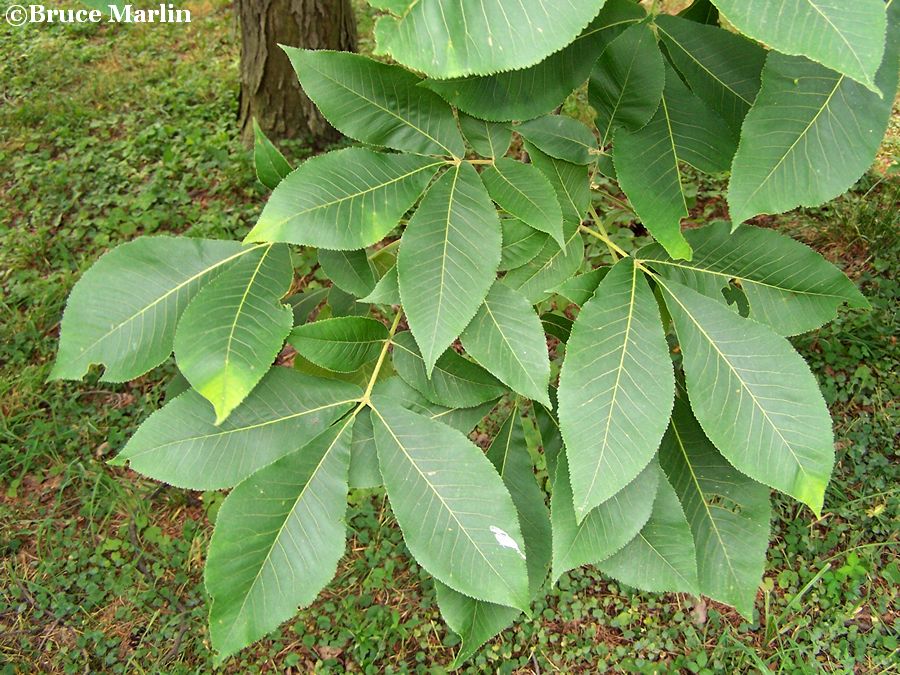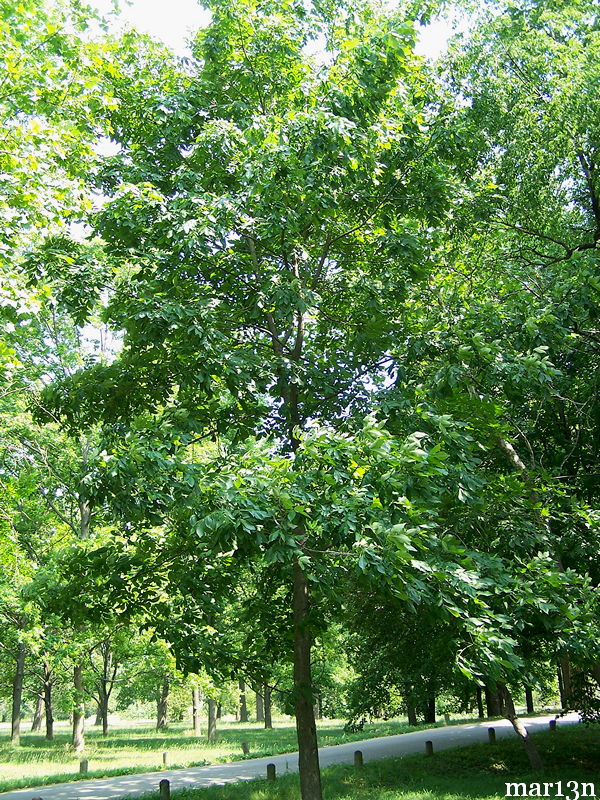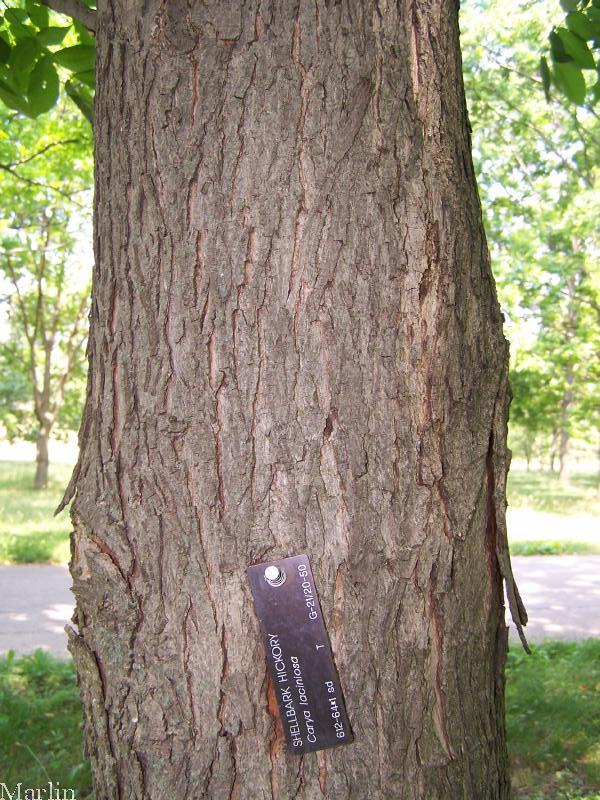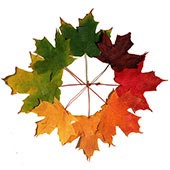Shellbark Hickory – Carya laciniosa

Family Juglandaceae. Shellbark hickory is a slow-growing, long-lived tree, hard to transplant because of its long taproot, and subject to insect damage. The nuts, largest of all hickory nuts, are sweet and edible.
 Shellbark started from seed 43 years ago
Shellbark started from seed 43 years ago
Shellbark hickory is also called shagbark hickory (not to be confused with Carya ovata), bigleaf shagbark hickory, kingnut, big shellbark, bottom shellbark, thick shellbark, and western shellbark, attesting to some of its characteristics.

Shellbark hickory nuts are used for food by ducks, quail, wild turkeys, squirrels, chipmunks, deer, foxes, raccoons, and white-footed mice.
Family Juglandaceae – Nut Trees

